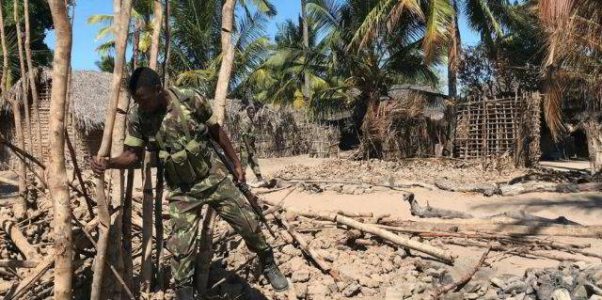
Islamic terrorists intensify their attacks in Cabo Delgado Province in Mozambique
Ahlu Sunnah Wal Jammah (ASWJ) was incorporated into Islamic State Central Africa Province (IS-CAP) in 2019 and includes militants from Kenya, Uganda, and Tanzania. The group has been responsible for attacks that have killed hundreds and displaced thousands from their homes since 2017.
IS-CAP made its first claim of an attack in the region in June 2019. The organization issued a statement at that time claiming to be involved in a gunfight with Mozambican military forces in the region. It later boasted that its fighters had captured weapons, ammunition, and rockets in the clash. The group’s claims of responsibility have increased significantly over the past several months. Although the group’s exact agenda is still unclear, some reports suggest it wants to establish an Islamic caliphate in the natural gas-rich province.
In recent weeks, the militants have carried out some of their most daring assaults, seizing government buildings, blocking roads, and hoisting black and white Islamic State flags in Cabo Delgado’s towns and villages. In the attacks, villages have been burnt down and people beheaded. The militants have also killed government soldiers before retreating into the bush. At least 1,000 people have died and nearly 150,000 have been displaced after two years of violence.
The group launched a series of coordinated attacks throughout April and May in an attempt to control movement between the towns of Macimboa da Praia and Montepeuz and the route to neighboring Tanzania.
On April 8, 52 youth were killed by the militants in the village of Xitaxi in Muidumbe district after they resisted forced conscription into the group. Reports from local residents described the youth being either shot dead or beheaded.
Another key attack occurred on May 12, when the militants targeted Koko and Nacate villages in the southern Macomia district of Cabo Delgado. They entered Koko village at 2 PM local time and began to burn down the surrounding buildings. When the attacks ended, 47 houses and several granaries had been razed.
On the same date, the militants captured Auasse, a town center near the port of Macimboa da Praia. A major electricity power substation serving Macimboa and Palma was destroyed, disrupting electricity and telecommunications in the region. The militants also destroyed a police station and captured an armored vehicle believed to have been donated to Mozambique by China. The attackers later used the vehicle to destroy two small bridges linking key towns in the region.
Miengueleua, a large town in Muidumbe, was attacked twice on May 11 and 12. During this attack, the militants also took time to arm themselves with weapons hidden along the Messalo River. Later, the port of Macimboa da Praia came under attack on May 12 and 13. In attacks along the coast of Macomia, the militants held public meetings with the local people.
Cabo Delgado covers 82,624 square kilometers and has an estimated population of 2.3 million people. Located 2,600 kilometers from the capital Maputo, the province is extremely poor and largely neglected. While it’s rich in mineral resources such as rubies, oil, timber, and gold, the Cabo Delgado is also rife with illegal activities such as drug and ivory smuggling.
In 2010, international oil and gas prospecting companies discovered huge deposits of natural gas in the province. The insurgency did not start until years later, with what was then ASWJ carrying out its first attack in October 2017.
With the recent spike in attacks, concerns have been growing that the assaults are threatening natural gas projects valued at $60 billion, which Exxon Mobil and Total SA are planning to spearhead in the region.
The fighting in Cabo Delgado has so far involved less sophisticated tactics and weaponry. The militants are known to use mobile phones to communicate and motorcycles to move from one point to the next.
Despite the less sophisticated tactics, Mozambican forces have largely failed to make any notable gains. The Mozambican security forces have had a few recent successes, however. On May 1, these troops repelled militants who had burned down a tourist camp in Metuge district in the province. No casualties came from the attack as most people living in nearby villages had fled after learning of the planned assault.
In early May, the Mozambican police and army backed by South African private military companies (PMCs) halted the militants’ aggressive two-month push south in Quissanga district. For a month, they had taken control of the district and were moving south towards the city of Pemba (AllAfrica , May 7). Similar short-lived military offensives have been common, but have failed to yield notable results.
Signaling a shift in strategy, Mozambique is reportedly in talks with South Africa for possible support in fighting the militant group. The country has been using PMCs to augment its forces to counter the group, but this week, President Filipe Nyeusi finally called for regional support to fight the insurgents.
Admitting to the severity of the situation and drawing in regional governments has widely been seen as the missing cog in the battle against the Mozambican insurgents. A united approach in extinguishing the violence is more urgent now than ever as the frequency and scale of attacks continues to increase and $60 billon in gas projects hang in the balance.
Source: James Town





